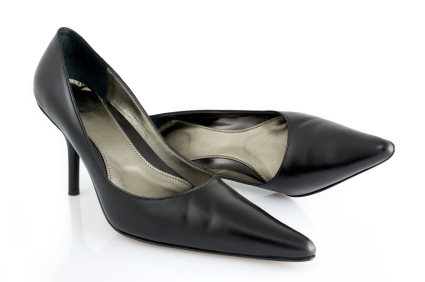I came across this article called Faked Fitness, and its list of ways we “fake it” hit closer to home than I expected.
Evolutionary psychologist Geoffrey Miller, PhD says many of us use these products to fake fitness:
- Figure-flattering clothes, plastic surgery, cosmetics, hair-care products, high heels. These help accentuate certain attractive features and disguise unattractive ones, with the goal of signaling physical health and fitness, fertility, and good genetic traits — which we may or may not possess.
- Athletic dogs, fast cars, video-game avatars. Although they don’t enhance our own abilities, these signaling strategies can mimic or stand in for traits we wish we had, letting us borrow or “put on” physical characteristics we have not actually developed.
- Expensive jewelry, art, books, fashion, fancy homes and cars. Possessing these things signals material success, education and social status, suggesting that we are discerning, intelligent and endowed with a high level of earning power — whether or not we actually are.
Difficult is Good
I can identify with more “fakes” than I care to admit. Thankfully, Miller’s got some advice on that too.
The first defense against the temptation to fake fitness through material consumption is to recognize that you actually want and deserve the real thing.
Investing a lot of time and energy in makeup and expensive clothes to mask an unhealthy, out-of-shape physical self you’re not happy with is unlikely to make you satisfied or confident. And it can keep you from investing time, money and energy in developing the real health and fitness you’d prefer to enjoy.
The same goes for acquiring athletic gear you don’t use, or musical instruments you never learn to play. Having those props around may serve as a reminder of who you want to be, but until you actually make the effort and take the associated risks — of being a beginner, of trying and failing, of looking foolish — you can’t really hope to enjoy their true rewards.
“The thing about mastering the most valued display skills — things like becoming fit, drawing, singing, doing improv comedy — is that they’re difficult,” Miller explains. “If they weren’t difficult, they wouldn’t be good indicators of fitness.”
That last quote really resonates with me. If something isn’t difficult, it’s likely not worthwhile or meaningful.
I think it goes back to the Quality versus Quantity debate. We all want quality right out of the gate; reality knows that we’ll have to invest in quantity to get to that level.
All that time and money we spend faking just delays the real investment – the one that will actually generate the return we’re looking for.
Spotting the Fake and the Prop
For me, the first key trick is to dig deeper every time I feel a compulsion to buy something: Why do I want it? Is it really for me, or to display for someone else?
Those questions help me spot a “fake” even before I make the purchase. For big things (> $100), I try to wait at least 30 days between the first want and any purchase. A great side benefit is that I buy a whole lot less. This strategy has prevented new cars, new furniture, new bags, new clothes, and all sorts of new gadgets. I’m not missing any of them.
Then, there’s still the danger of the “prop” – an item that represents or supports something I want to be. This one is genuinely for me, but is often a replacement for focus and diligent work. I don’t quite have this one mastered yet. I’ve caught myself realizing this a few weeks after purchasing a course or ebook that I haven’t touched.
I think the best defense for this is accountability, the good ‘ol buddy system. I’ve put a big dent in these type of purchases by being more honest with my husband. It’s not that I’m looking for permission to make a purchase, but it’s helpful to talk it through. Often, in the course of the conversation, I’ll figure out myself that it’s a band-aid, not a real solution.
What about you? Did you spot any of your fakes on the list?








I really like this blog, though sometimes it takes high heals to get you from a hopeless place so that you can see that there will be hope again. This coming from a girl who lost 150lbs that I never should have gained who was a Varsity Cheerleader before getting sick and just needed to start exercising and thinking again. Sometimes Beethoven needs to fake his way until he can become Beethoven, you have to have the courage to get better and practice. I have to admit that I just bought a size small red sweater dress from Calvin Klein who has become one of my favorite food deterrents, but purchasing things such as food, makeup, toys, are no substitute for healthy or happy. No matter where you are if you are not that nothing works really. Band Aids are more harmful than good, their not permanent.
Ashley – You make a great point. Sometimes an item on the “fake” list can be a great motivator. I’ve certainly used that strategy too. I think the key is to be certain that there’s a plan that goes right slongside it.
Thanks for the conversation!